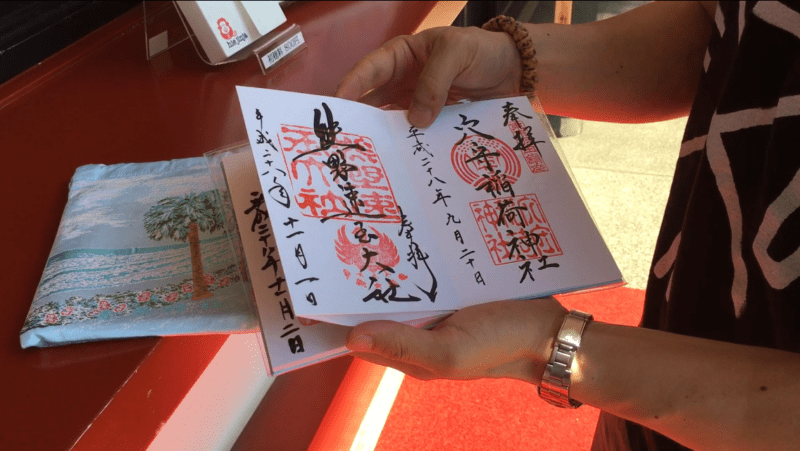The goshuin stamp and goshuincho book is a trend that has been developing in Japan over the last few years, and is particularly popular among women. But what is it exactly, and why do people do it?
What is a Goshuincho?
A goshuincho is, literally, an “honorable stamp/seal book” used by people visiting shrines or temples. The book is handed over to an attendant and in return for a modest fee, will be stamped with the shrine or temple’s name along with the day’s date. This serves as proof of pilgrimage to that location. A completed goshuincho, especially one that goes to certain specific shrines or temples, supposedly gives some sort of spiritual fulfillment.
These days it’s admittedly less about the spiritual cleanse one may or may not receive and more about the journey itself. The books come in various designs, and many shrines and temples will have their own exclusive goshuincho book so choose carefully…or simply buy them all. These will usually set you back about ¥1,500.
Lately, with the goshuin stamp collecting boom, you can also find them at select stationery stores and souvenir shops too, but note that these may be smaller than the standard size and may be rejected at the shrine or temple!
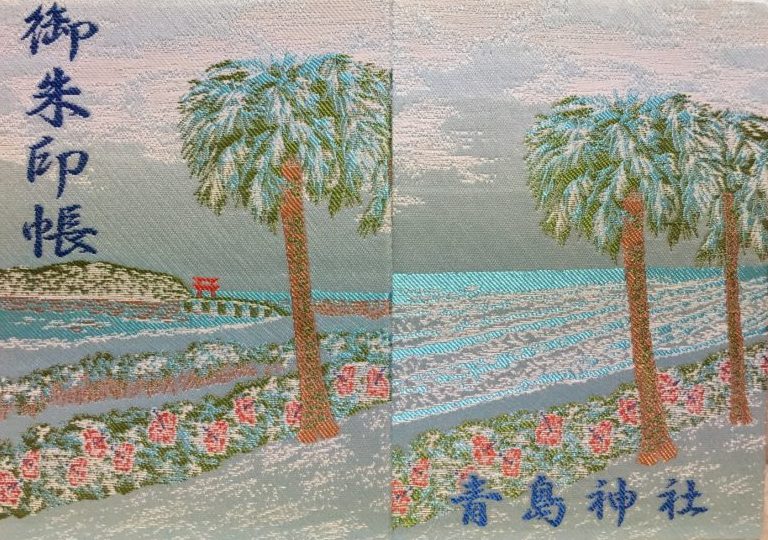
Front and back cover of a goshuincho bought at Aoshima Shrine, Miyazaki
The Anatomy of a Goshuin Stamp
Goshuin stamp designs will differ according to the shrine or temple you go to, as each one has its own style. However, there are some similarities across the board. Here’s a guide to the general set-up of a goshuin stamp:
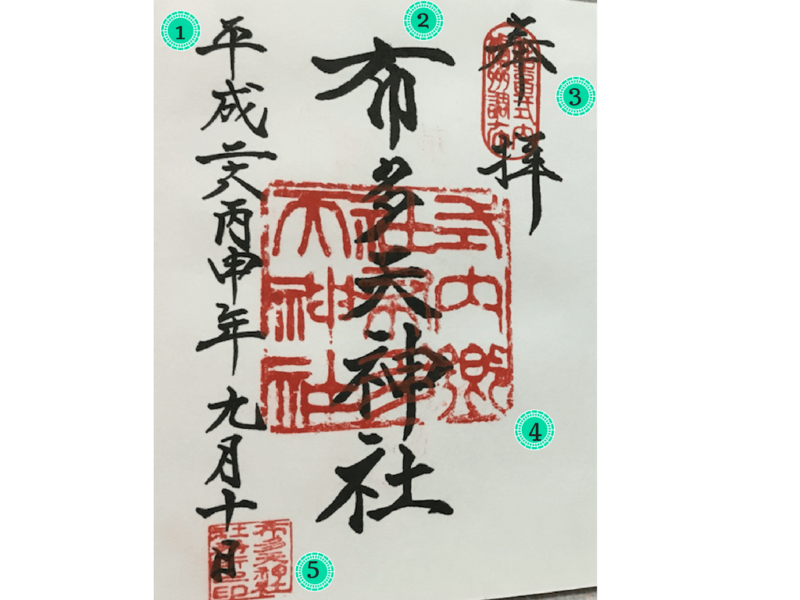
- The date of your visit in year/month/day format. In this case, Heisei 28 September 10. (Sept 10, 2016)
- The name of the shrine or temple you’re visiting, written in calligraphy. Written here: Fudaten Shrine.
- 奉拝 (houhai), which means to worship.
- A stamp with the name of the shrine.
- A second stamp indicating the name of the shrine — not all shrines or temples will have this, while others will have multiple stamps. These may signify the bodhisattva there (in the case of temples), or may be the official emblem of the shrine, or feature some connection with neighboring or related shrines.
Many goshuin pages will look very different from the above example — but that’s part of the fun! Each shrine and temple has their own distinctive design, layout and calligraphy style.
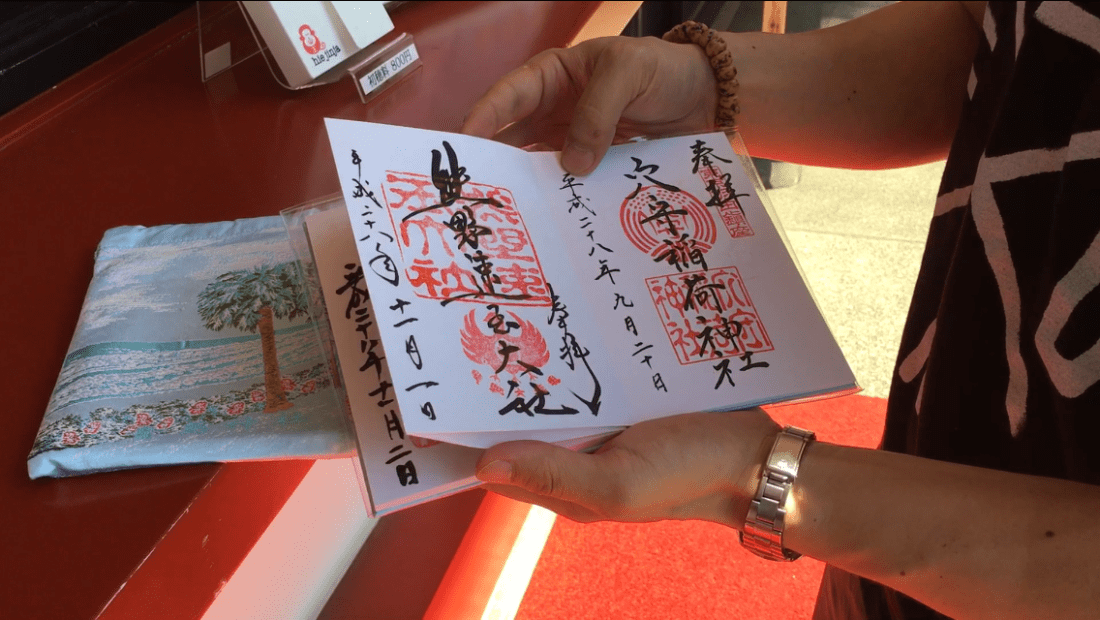
How To Use Your Goshuincho
When you arrive at the shrine or temple, make sure to make a small offering at the saisenbako (money box) and pray first. Since the goshuin stamp is essentially “proof” of pilgrimage to a religious site, it’s considered a faux pas at best and sacrilegious at worst to not at least pay respects at the temple or shrine before getting your souvenir. Also, if visiting a shrine, make sure to follow general etiquette guidelines when you enter shrine grounds.
Once done, head to the goshuin reception desk and hand over your book, preferably opened to the page you want stamped. Depending on the shrine, you will either pay the fee (usually ¥300 but this may vary) before or after the stamp is complete. You will most often be given a number plaque and then asked to wait. A few minutes later your number will be called. Hand over your plaque (and money, if you didn’t pay before) and receive your newly stamped and signed page.
There is no rule indicating temple and shrine stamps must be in separate goshuincho books, but many people like to keep them separate.
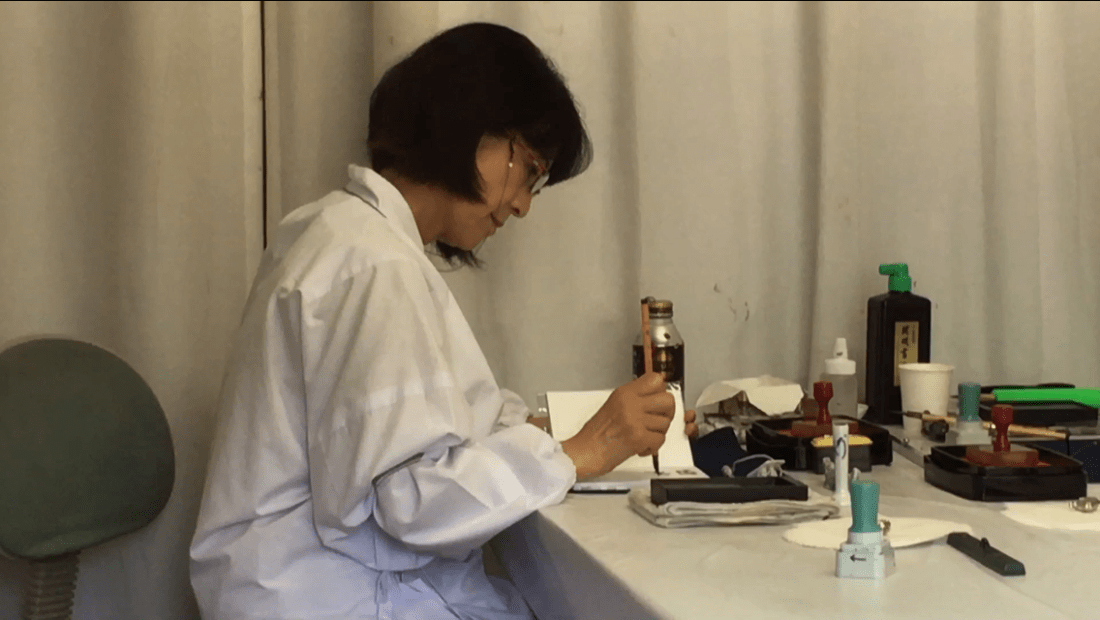
Extra Goshuin Tips
Shundo Ohura of Gosyunibito.com, a website devoted to shrines and goshuincho, offers some tips on what to be mindful of when requesting a goshuin stamp.
- If you have a book, but you forgot to bring it, simply let the attendant know and they will give you your stamp on a separate piece of paper. You can glue this into your book later once you get home. Do not ask them to write into a notebook or scrap paper that you happen to have with you.
- Shrines aren’t as well equipped with change as shops, so when you pay for your stamp try to keep it as close to the ¥300-500 fee as possible. Don’t pay with ¥5,000 or ¥10,000 notes.
- Some shrines and temples do not offer this service at all. Research in advance, or ask once you get there. If they don’t offer it, then you’re out of luck.
- While waiting for your goshuin stamp and calligraphy, wait patiently without talking or texting on your phone, talking loudly or otherwise inconveniencing others around you. Do not eat or drink. (Although you shouldn’t be doing that on temple or shrine grounds anyway.)
Related Posts
- How to Visit Shrines in Japan
- 10 Serene Temples and Shrines in and Around Tokyo
- 5 Must-visit Shrines and Temples in East Kyoto
Updated On January 16, 2024

